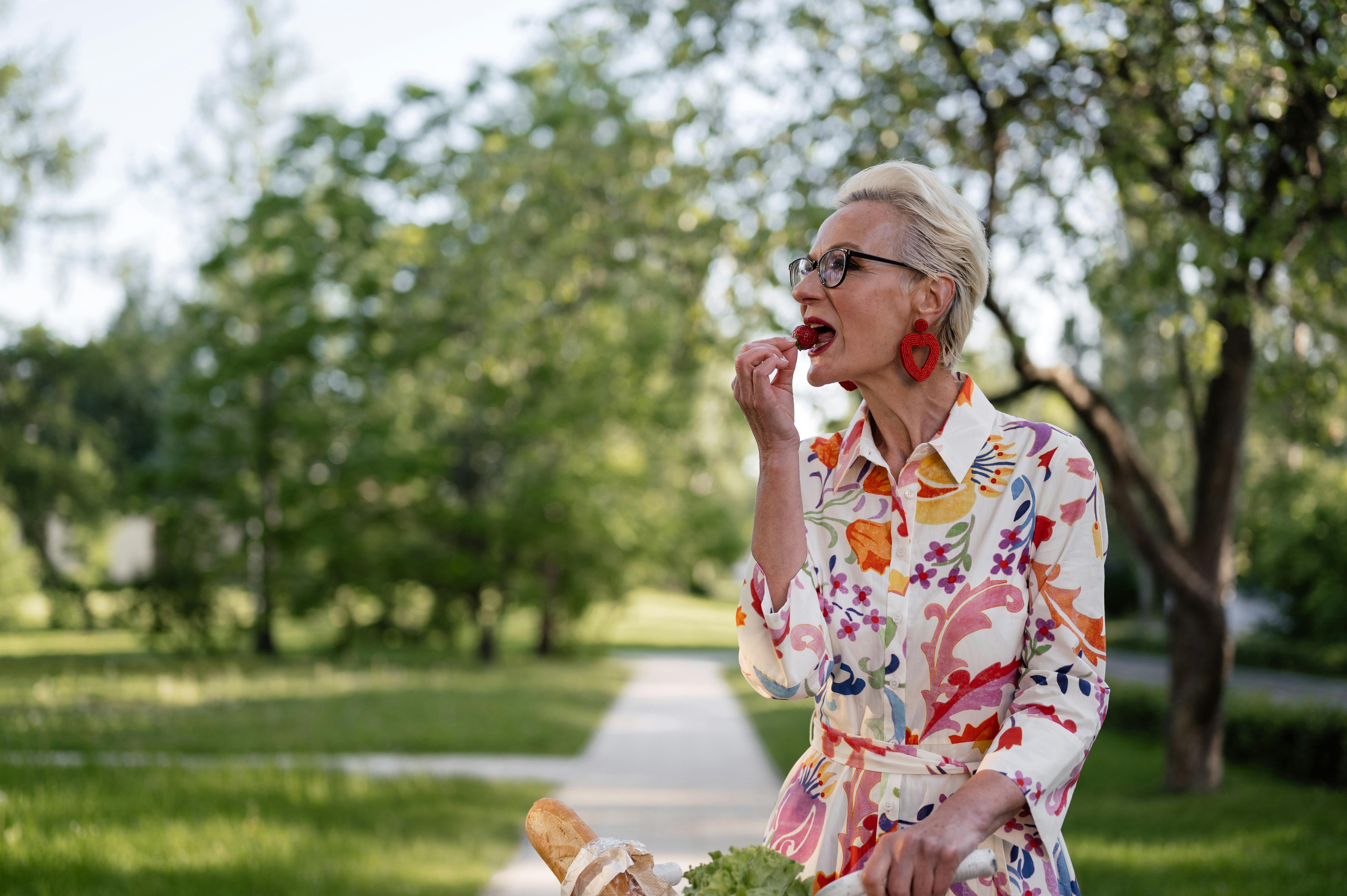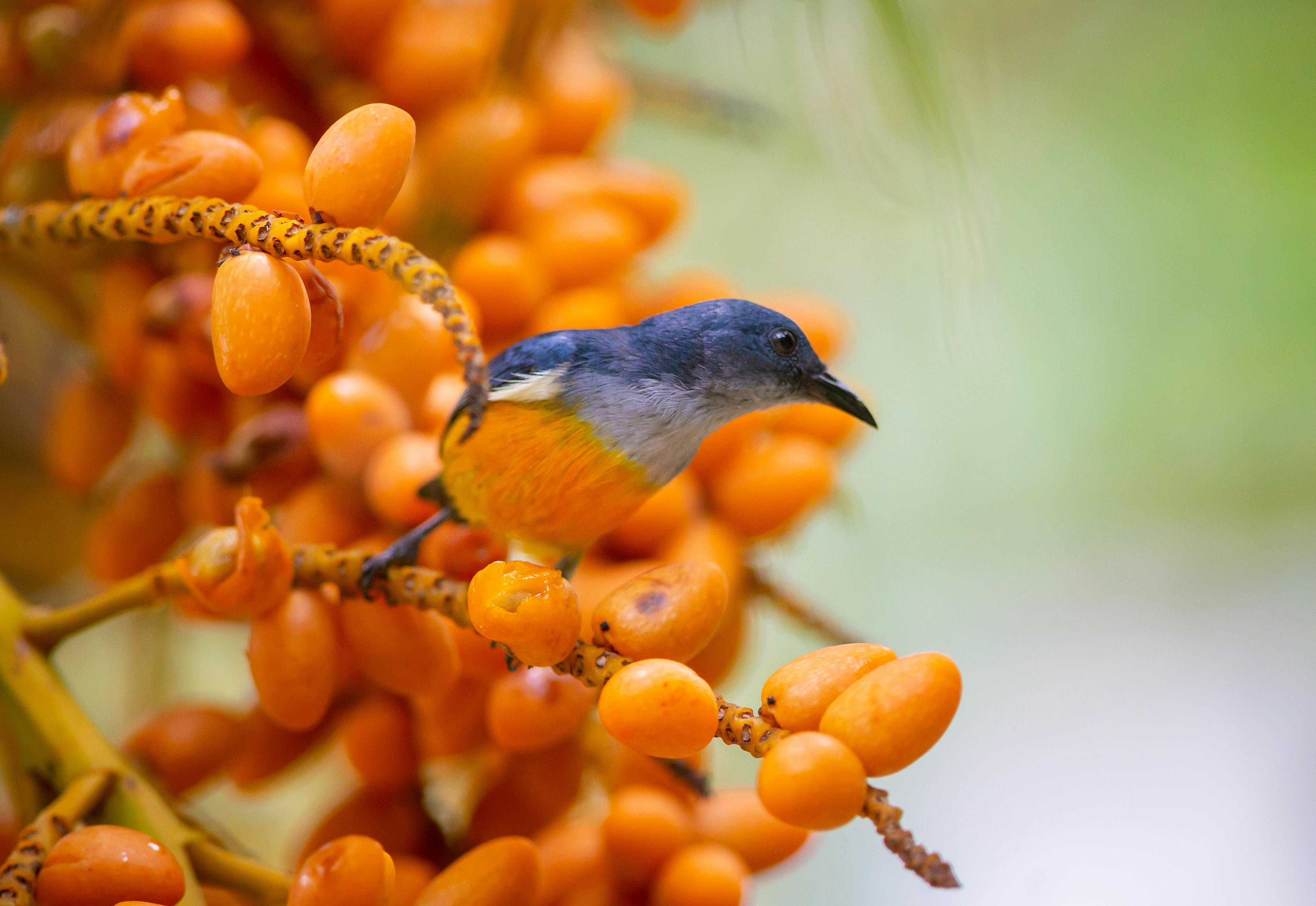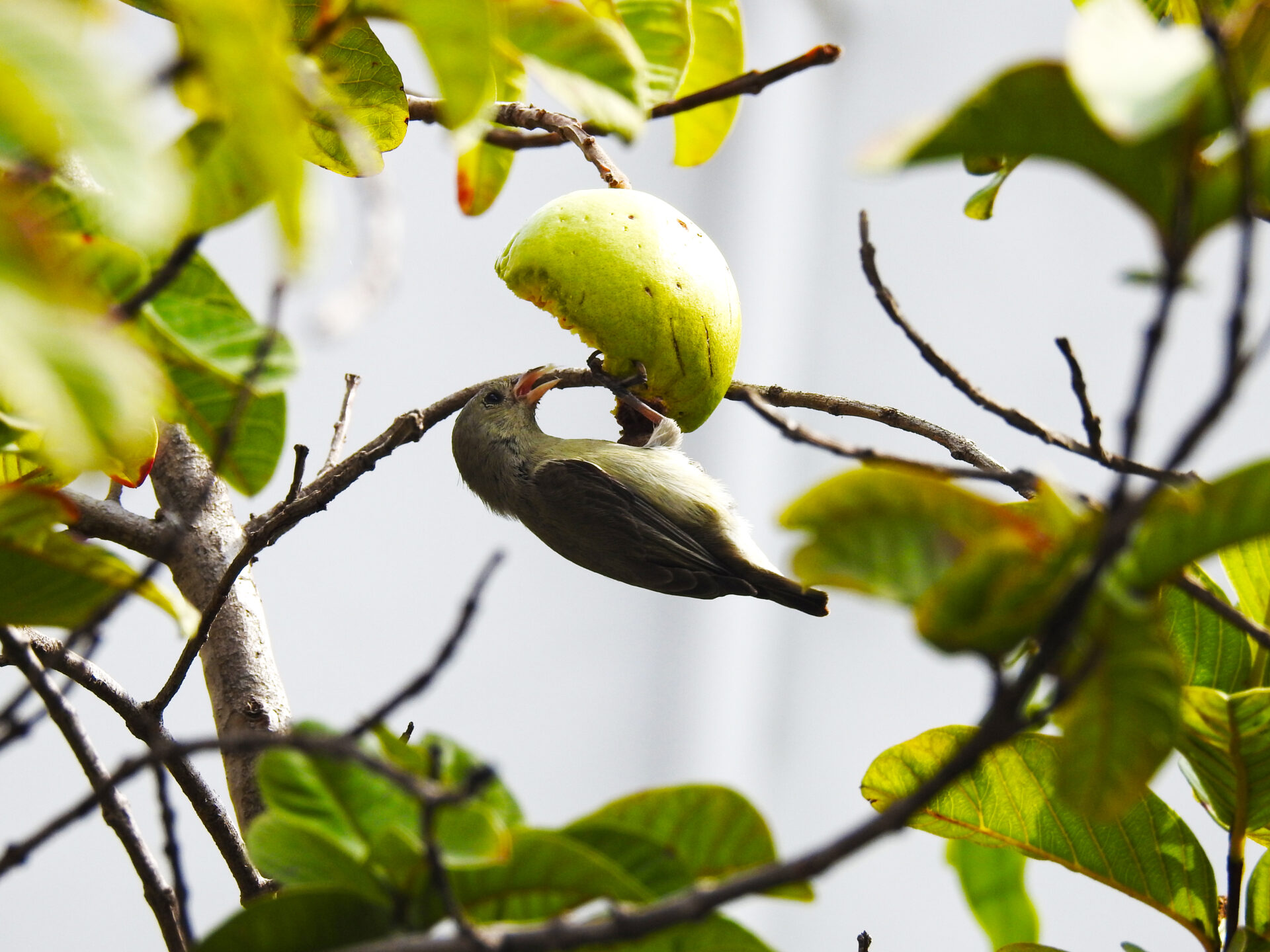Eating fruit off of trees is a favorite pastime of birds. Unfortunately, this can cause problems for fruit farmers and gardeners alike. If birds are eating the fruit off of your trees, it can be disheartening and costly. Fortunately, there are ways to keep birds from eating fruit on trees. In this article, we will discuss some of the best methods for keeping birds away from your fruit trees.The best way to prevent birds from eating fruit on trees is to cover the trees with bird netting. The netting should be secured in place to ensure that the birds cannot get through it. Additionally, it is important to check the netting regularly for any tears or holes that may have occurred. If any are found, they should be repaired as soon as possible. Another option is to hang reflective objects, such as CDs or wind chimes, from the trees. The reflected light and sound may scare the birds away from trying to eat the fruit.
Discouraging Birds From Eating Fruits
Birds eating fruits can be a nuisance. They can cause serious damage to the trees and the fruit itself, leaving them inedible or unsellable. Fortunately, there are several strategies that can be used to discourage birds from eating fruits.
One of the most effective ways to discourage birds from eating fruits is to install netting around the trees or over the fruit. Netting should be installed securely and tautly so that birds cannot gain access to the fruit. The netting should also be secured at least one foot above ground level in order to prevent birds from gaining access from underneath.
Another strategy for discouraging birds from eating fruits is to use a repellent spray near the tree or on the fruit itself. These sprays contain ingredients such as garlic, cayenne pepper, or hot sauce which make the fruit taste unpleasant for birds and discourage them from consuming it.
It is also important to keep trees and bushes trimmed regularly as this will make it more difficult for birds to reach the fruit. Additionally, keeping nearby grass and weeds cut short will help reduce hiding places for nesting birds, which will make it difficult for them to feed on your trees and bushes without being seen by predators or humans.
Finally, using a scarecrow or other visual deterrents such as hanging CDs around your trees may help discourage birds from eating your fruits as well. The reflected light from these objects may startle the birds away temporarily, allowing you time to take other measures such as netting or spraying repellents before they return again.
Overall, there are many strategies available for discouraging birds from eating fruits, so it is important to explore all of your options in order to find an effective solution that works best for you and your particular situation.
Choosing The Right Plants And Trees
Choosing the right plants and trees for your garden or outdoor space can be a daunting task. There are so many options available, and you want to make sure you’re making the right choice. To make things easier, there are a few key factors to consider when selecting plants and trees.
The first factor is location. You want to choose plants and trees that will thrive in the conditions of your area. Consider the amount of sun, shade, and water that the area receives, as well as any potential wind or other weather conditions that could affect your plants. By choosing plants and trees that are suited to your climate, you’ll ensure their success for many years to come.
Next, consider the size of the space you have available for planting. Make sure to select trees or shrubs that won’t outgrow their space too quickly or become invasive in natural areas nearby. It is important to research each plant before purchasing it in order to get an accurate idea of how large it will grow.
Finally, consider the aesthetic appeal of your desired plants and trees. Choose colors and shapes that will complement each other in order to create a beautiful outdoor oasis that you can enjoy for years to come.
By taking all of these factors into consideration when choosing plants and trees for your garden or outdoor space, you can be sure that your selection will be successful and look great for many years.
Planting Trees That Are Not Attractive to Birds
For those looking to plant trees in their backyard or garden but don’t want birds flocking around them, there are a few strategies you can employ to make sure the birds stay away. Firstly, consider planting trees that do not produce fruit or berries, or other food sources that would be attractive to birds. Trees like conifers, oaks and maples are far less likely to draw in birds than fruit-bearing trees like apple trees or cherry trees.
Another way to discourage birds from visiting your yard is to pick species of trees that have very dense foliage. By having denser foliage, birds will find it harder to land on your tree and feed off of it. Examples of tree species with dense leaves include elms and ash trees.
You can also opt for evergreens instead of deciduous trees as evergreen leaves remain on the tree year-round and provide even more coverage from prying eyes – both yours and the birds’. Additionally, evergreen branches tend to be thicker than those of deciduous varieties, making it difficult for smaller songbirds to perch.
Finally, if you want a bird-free environment in your yard, try planting multiple types of trees with different sizes and shapes. Clustering multiple types of vegetation together helps create an environment that is less attractive to birds as they are unable to easily identify food sources amongst the thick foliage.
By following these tips you can ensure that your backyard remains bird-free while still allowing you the pleasure of enjoying beautiful plants and lush greenery in your own outdoor space.
Placing Decoy Fruit On Trees
Fruit tree growers are always looking for ways to protect their crops from birds and other animals. One of the more popular methods of doing this is to place decoy fruit on the trees. Decoy fruit is made out of plastic, paper, or a combination of both and looks very much like the real fruit that is growing on the tree. When birds or other animals come to feed on the decoy fruit, they quickly realize that it is not edible and move on without damaging the real crop.
Decoy fruits come in many shapes and sizes and can be customized to match the particular type of tree on which they will be placed. Some growers use decoys that look like apples, oranges, peaches, or other types of fruit while others opt for more generic shapes such as circles or squares. The goal is to make it look as realistic as possible so that animals are fooled into thinking it is real food.
In addition to protecting against birds and other animals, decoy fruits can also help with pest control in some cases. Certain pests such as aphids are attracted by the sweet aroma of fresh fruit and may try to feed on it if present in large enough numbers. By placing decoys on the tree, these pests will be fooled into thinking there is food available and won’t be as likely to damage the real crop.
Decoy fruits can be purchased online or at most garden supply stores at relatively low prices. They are easy to install and require very little maintenance once they have been put in place. It is important to remember though that they will need to be replaced periodically due to wear-and-tear from weather conditions or animal activity.
Overall, using decoy fruits can be an effective way for fruit tree growers to protect their crops from birds and other animals while still saving money in the long run.

Installing Bird Deterrents On The Trees
The presence of birds around your property can be a nuisance, and they can cause damage to your plants, trees, and other outdoor features. Installing bird deterrents on the trees is an effective way to keep birds away from your property and reduce the amount of damage they can cause. Bird deterrents come in a variety of forms including physical barriers, such as netting or spikes, as well as sound and light devices.
Physical barriers are the most common form of bird deterrents for trees. Netting can be placed over the tree branches or around the trunk to prevent birds from perching or nesting on the tree. Spikes can be attached to surfaces like tree trunks or branches to make them too uncomfortable for birds to land on.
Sound and light devices are another type of bird deterrent that can be installed on trees. These devices emit either loud noises or flashing lights in order to scare off birds and discourage them from returning to the area. Some devices use both sound and light for maximum effectiveness.
Before installing any type of bird deterrent on a tree, it is important to make sure that it is safe for both the tree and any nearby wildlife. The most effective deterrents are those that do not cause any harm or discomfort to animals or plants in the vicinity. Additionally, it is important to regularly inspect any bird deterrents that have been installed on trees in order to make sure they remain effective over time.
Installing bird deterrents on trees is an effective way to protect them from damage caused by birds without causing harm to animals or plants in the area. It is important to choose a deterrent that is safe for both nearby wildlife and the tree itself, as well as inspect it regularly in order for it remain effective over time.
Using Bird Nets To Protect Fruits On The Tree
Bird nets can be used to protect fruit trees from birds that could otherwise damage the fruits. Bird nets provide a physical barrier that can keep birds away from the tree and prevent them from accessing the fruits. The nets are easy to install and are available in various sizes and materials, allowing for a customized solution to suit any type of tree.
When installing bird nets, it is important to ensure that they are properly fitted onto the trees. The nets should be secured tightly around the branches, with no gaps or openings that could allow birds to access the fruit. It is also important to check regularly for any tears or damages in the net, as these can create openings where birds can get in.
In addition to using bird nets, there are other methods for protecting fruit trees from birds. These include using scare tactics such as sound or visual deterrents, as well as pruning techniques that aim to reduce the number of fruiting branches on a tree. However, bird nets remain one of the most effective ways of keeping birds away from fruit trees, providing an effective physical barrier that can last for many years with minimal maintenance.
Using bird nets is an important part of protecting fruit trees from birds and other animals that could otherwise cause damage to delicate fruits. Not only do they keep birds away from the tree, but they also provide an effective barrier against other pests such as rodents or insects that could otherwise eat or destroy your fruits. With proper installation and regular maintenance checks, bird nets can provide long-term protection for your fruit trees and help you enjoy delicious fruits for years to come!
Building A Barrier Around The Tree Or Planting Area
Creating a barrier around a tree or planting area is an important step in the process of protecting plants from pests and disease. A barrier can be made out of a variety of materials, including metal, wood, plastic, or stone. Depending on the type of material used, the barrier may need to be reinforced in order to properly protect the plants. Additionally, it is important to consider how much space will be needed for the barrier in order to ensure that it is large enough to provide adequate protection.
When building a barrier around a tree or planting area, it is important to keep in mind the type of pests or diseases that may affect the plants. Different types of pests and diseases require different types of barriers in order to effectively protect plants. Additionally, different types of trees and plants may require additional measures in order to effectively protect them from pests and disease. For example, some trees may require taller barriers or thicker materials in order to provide adequate protection against certain pests or diseases.
In addition to using barriers for protection against pests and disease, it is also important to consider other forms of protection such as mulching or pruning. Mulching can help keep soil moist and reduce weed growth which can help reduce damage caused by pests and disease. Pruning can also help promote healthy plant growth by removing dead or damaged branches which can make trees more resistant to pests and diseases.
Finally, it is important to inspect the barrier regularly for signs of wear or damage that could compromise its effectiveness. If any damage is found, it should be repaired as soon as possible in order to ensure that the barrier remains effective in protecting plants from pests and disease. By taking these steps when building a barrier around a tree or planting area, you can help ensure that your plants are properly protected from potential harm caused by pests and disease.

Conclusion
To prevent birds from eating the fruit on your trees, you should use physical barriers such as netting, scare tactics, and bird repellents. You should also make sure to pick up fallen fruit so that birds will not be attracted to it. If you have a large number of birds in your area, you may want to consider using a bird trap or bird spikes. Finally, if you have an allergy or sensitivity to bird droppings, you should always wear a mask when harvesting fruit or trimming trees.
By taking these steps, you can successfully keep birds from eating your fruit and ensure that your harvest is safe and healthy for consumption.



